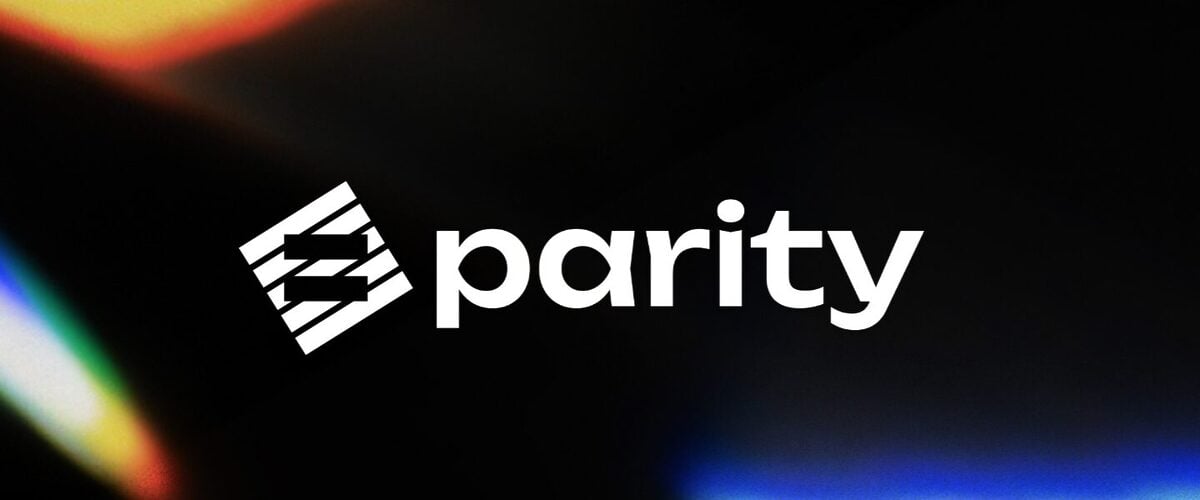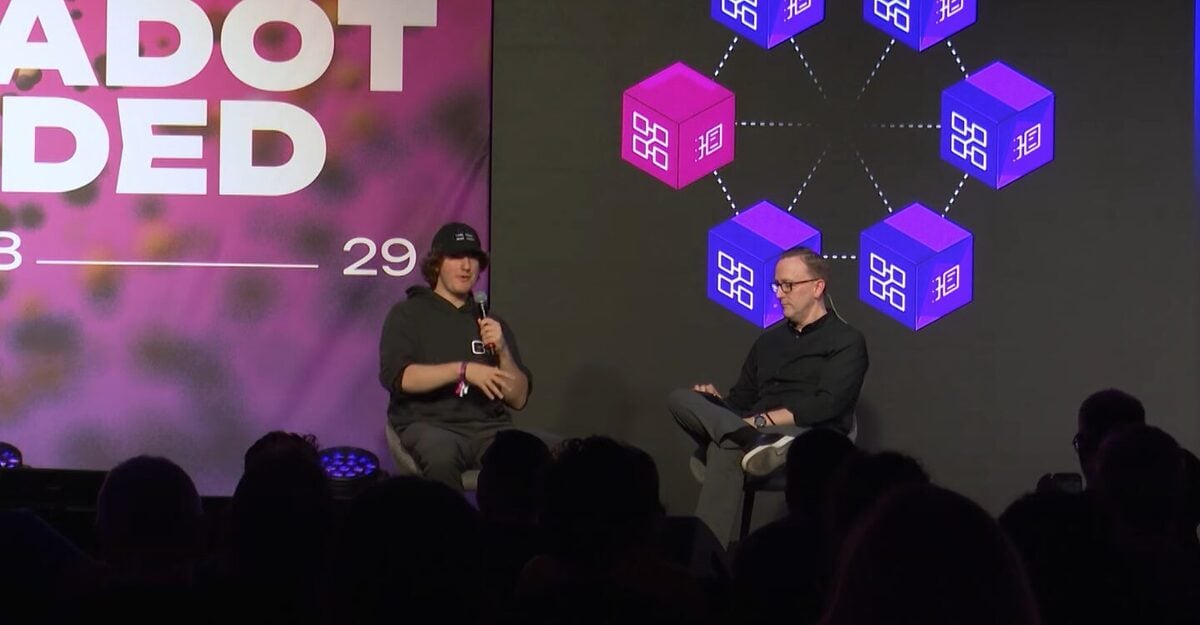The idea of Polkadot (DOT) has been swirling since 2014, and although it has been available for several years now, its existence would not have been possible without Robert Habermeier.
Considering that Robert worked side by side with Ethereum co-founder Gavin Wood when working on Polkadot, unfortunately he is often overshadowed by his better-known colleague. But the truth is that Robert can be considered the “savior” of Polkadot. He arrived at the right place at the right time and, thanks to his skills, made the project a reality.
But why is Robert so important to the Polkadot project? Let’s find out as we chronicle the life of this underrated developer.
Who is Robert Habermeyer?

Robert Habermeier is one of the three co-founders of Polkadot, a multi-chain network that allows individual blockchains to communicate with each other. This ambitious project required someone with the advanced security and coding skills that Robert acquired early on.
But the truth is that Robert didn’t even think about becoming a part of the cryptocurrency world at first. But how did he become such a prominent figure on one of the largest blockchain networks on the Internet?
Early
Robert did not specify where he attended school, but what is known is that he decided to study applied mathematics. Not because he wanted to be a math teacher, but because he felt a computer science degree was too outdated. Modern standards.
Secretly, his interest was in computer security, and he felt that starting with mathematics would broaden his knowledge and understanding of computer coding and cryptography.
Robert himself admitted on the Space Monkeys podcast that he was a pretty bad student in college and regularly skipped class. As a result, he only lasted a year, but it was nonetheless where his adventure into the depths of cryptocurrency truly began.
Getting started with Rust
In 2011, during the cryptocurrency boom and bust, Robert discovered Bitcoin. He claims he learned about it from Reddit’s Bitcoin tipping bot, which is used to send cryptocurrency to other users of the platform or “tip” them.
At the same time, he began putting his math skills to work by working on a digital programming language called Rust. Although Rust is commonly used for blockchain development purposes, Robert was simply attracted to the program’s fast and secure coding style.
Little did he know that learning the ins and outs of Rust would be his golden ticket to becoming a cryptocurrency developer. But until this point, he didn’t fully understand the whole idea of cryptocurrency and blockchain technology. That is, until a blog post caught his eye.
Join Parity Technology


In early 2016, Robert discovered a post written by Ethcore, a blockchain development company later known as Parity Technologies. The post boasted how Ethcore had created the fastest and most secure Ethereum client in Rust, and because it was open source, anyone could test it out for themselves.
This caught Robert’s attention for two reasons. Firstly, he was already familiar with Rust, which made it easy for him to understand the functionality of this Ethereum client, and secondly, because he was already familiar with cybersecurity. In fact, during his teenage years, Robert worked on several security issues actively testing what kinds of attacks could and could not penetrate system frameworks.
So no one was more ready to test this new client than Robert, and after contacting Ethcore, later rebranded as Parity Technologies, he got the opportunity to meet the team, including Ethereum founder Gavin Wood. Impressed by the young man’s coding skills and security awareness, Robert is invited to become a full-time Ethereum core developer, a position he gladly takes on.
dot dream
The idea for Polkadot was mentioned by Gavin Wood in 2014, but the lack of a true vision and like-minded developers made it nearly impossible to get it off the ground.
Just a year after Robert joined Parity, Gavin and his supporters at the Web3 Foundation felt they could finally get this multi-chain project up and running, but it would take a lot of work.
Robert, Gavin, and Peter Czaban had many discussions at this time, laying out the foundations of Polkadot and explaining why it was deemed necessary. Several factors, including Ethereum’s slow speed, have led to continued use of Polkadot, but the biggest factor, which Robert has mentioned on several cryptocurrency podcasts, is that the blockchain is spread too thinly in his eyes.
For example, if a blockchain was designed purely for transactions, because there are so many types of transactions that could be performed, it would have difficulty accommodating each transaction and would eventually become expensive or clunky to use.
Polkadot was seen as a way to solve these problems and now, with Robert and the team, it seemed like it might actually be possible to make it a reality.
Working at Polkadot


In 2017, the development of Polkadot began with Gavin Wood, Robert Habermeier, Peter Czaban, and the Web3 Foundation as key players.
Among this talented group, Robert was primarily responsible for writing the consensus code for Polkadot’s parachain, the network’s bridge that allows blockchains to communicate with each other.
He was also responsible for building the initial proof-of-stake consensus code, a mechanism for confirming new transactions to add an additional layer of security to the network.
Both of these systems are essential to Polkadot’s ecosystem and form the basis for future upgrades, so it’s easy to see why Robert’s skills are so important here.
Robert’s work on the Polkadot network will not go unnoticed. He soon joined Thiel Fellows, a foundation dedicated to supporting the careers of young, aspiring developers. The prestigious position awarded him $100,000 to fund Polkadot work over the next two years.
But he wasn’t locked in an office 24/7 while developing Polkadot. Robert was actually one of the most active members of the team when it came to leading live conferences and lectures. For example, he was one of the featured speakers at the first Sub0 developer conference and became a regular at the Polkadot Decoded lectures.
During these events, he introduced Polkadot’s early systems to an enthusiastic audience, specifically Substrate, which is being touted as an all-in-one toolbox to make blockchain development easier.
current day


October 2, 2023, Robert made it official at X. He said he was retiring from Parity Technologies after seven years with the company. He has been a big part of Polkadot’s development in the early days, but it is now clear that he is all-in on the project and focused on improving the ecosystem.
Robert is still one of Polkadot’s main spokespeople and not only attends conferences, he also appears more actively on podcasts and remains active at X. “Asynchronous Rob”.
The “asynchronous” in this tag refers to one of the many projects Robert continues to work on to this day to expand the Polkadot ecosystem. In this case, it’s all about freeing up block space and performing transactions much faster than before.
Although this project wasn’t created by Robert alone, it’s clear that his coding talent played a big role in getting it off the ground.
Robert’s Side Project: Hypersphere
Throughout this entire journey, there was one additional project called Hypersphere, which Robert founded and served as a managing partner.
Hypersphere was founded by Robert Platts and Jack Platts, former directors of the Web3 Foundation. It is designed as a launchpad to support promising cryptocurrency projects that can showcase what Polkadot can really do.
For example, one specific project that Hypersphere has supported is Acala. Acala essentially became Polkadot’s De-Fi hub and stood out with its novel architecture and rich use cases.
Did Robert save Polkadot?
If Robert hadn’t joined Parity in 2016 and proven his worth to Gavin Wood, Polkadot might have launched as soon as it did or never existed at all.
It is worth remembering that Robert became a co-founder of Polkadot just a year later. This clearly proves that he has a special talent for coding that was previously lacking in the team.
Additionally, Robert was the one who designed the consensus code that fuels the parachain, a core component at the heart of Polkadot’s entire framework, so he wasn’t just working on small quality-of-life features.
On the flip side
- While Robert played a key role in the development of Polkadot, Peter Czaban was just as important as he was responsible for supporting and funding the project as part of the Web3 Foundation. He was also partly responsible for managing Polkadot in its early stages before the auctions began.
Why This Matters
Robert Habermeier, although often overshadowed by his better-known peers, has still been a central cog in the Polkadot system for many years, contributing his security and coding expertise to this new project at the right time.
Frequently Asked Questions
Robert is mainly active on his X account and his name is X account. “Asynchronous Thieves.” He posts regular updates on upcoming Polkadot projects and occasionally responds to user comments.
Polkadot Decoded has become a popular conference held over two days in June or July, depending on the year.
It is unknown whether Robert is active in the cryptocurrency market or not, but he is dabbling in angel investing, which involves spreading money to help others start promising businesses they have in mind.

